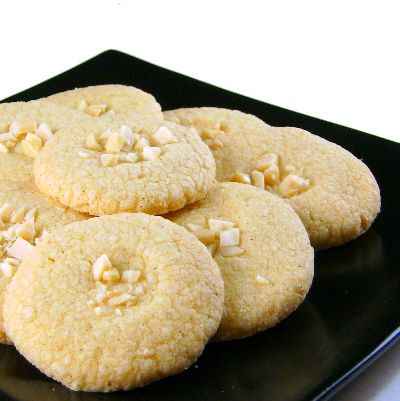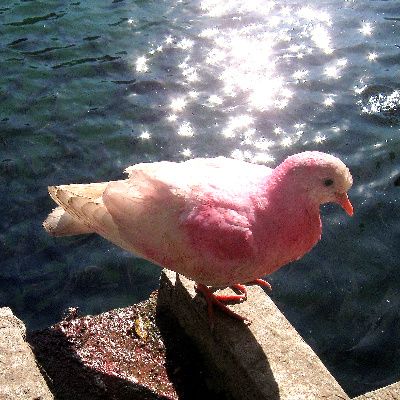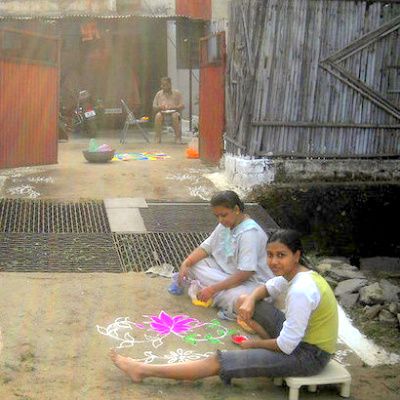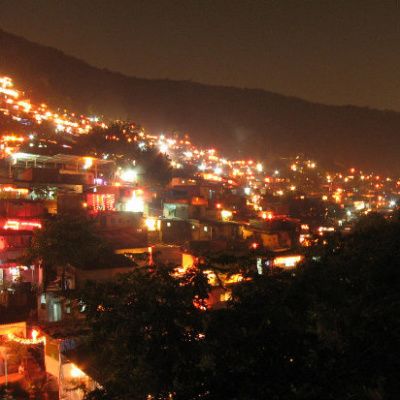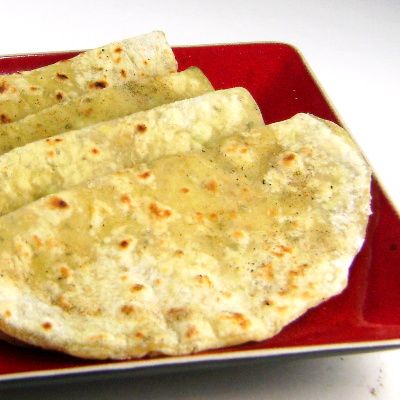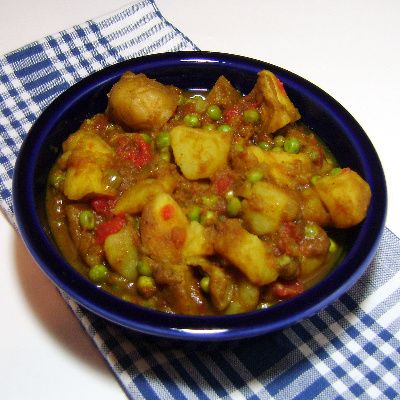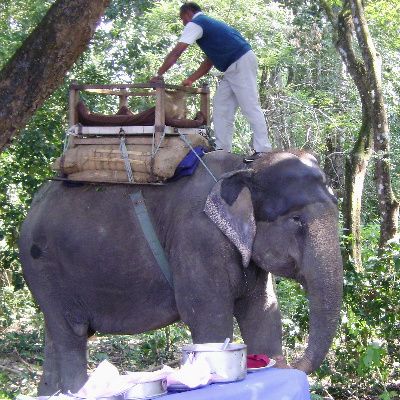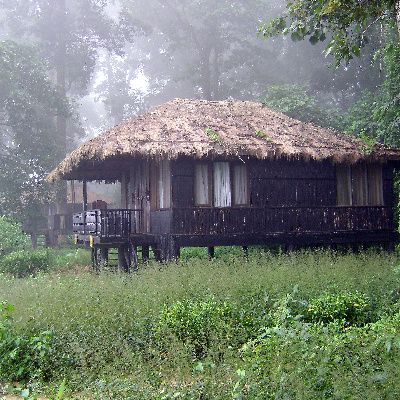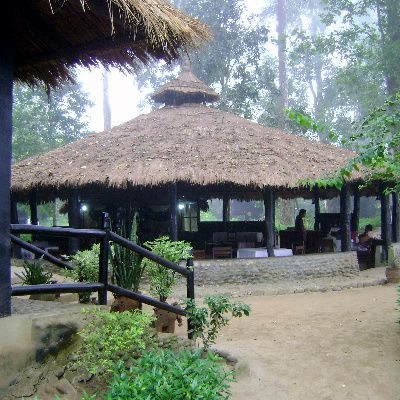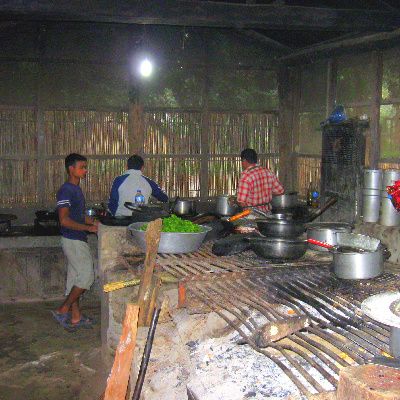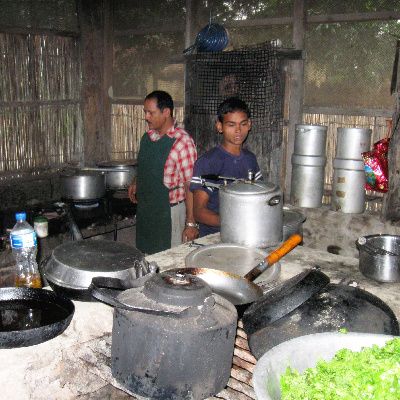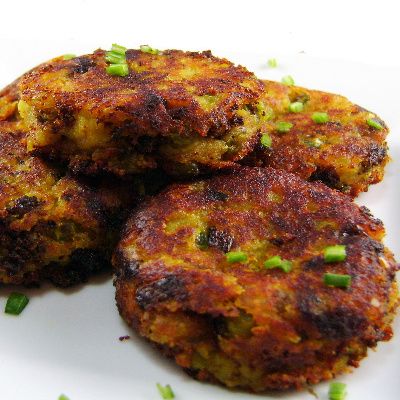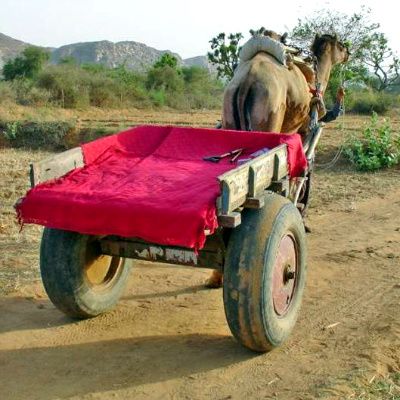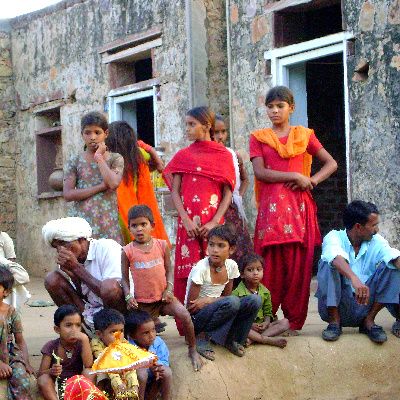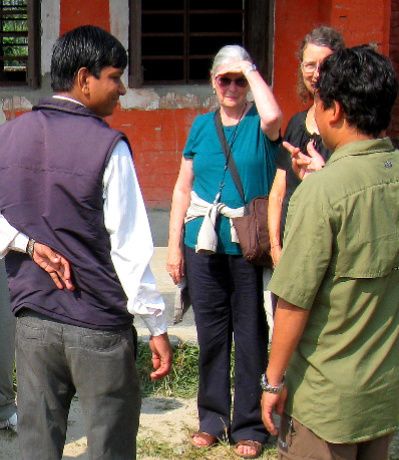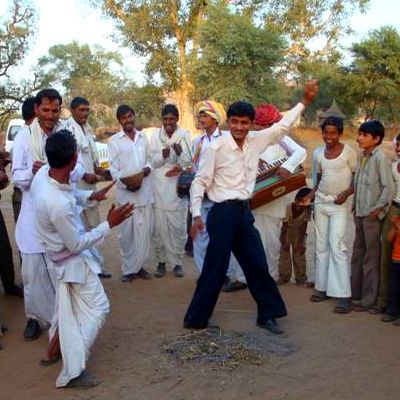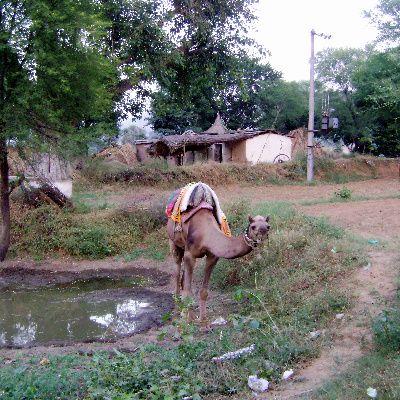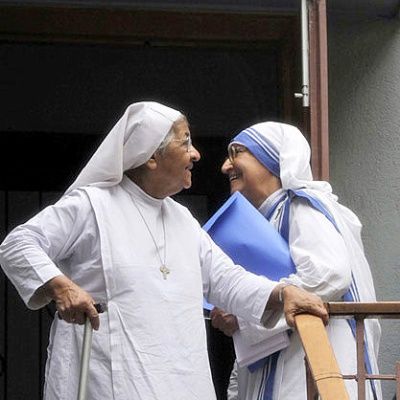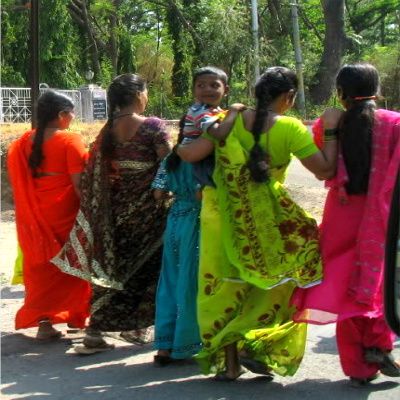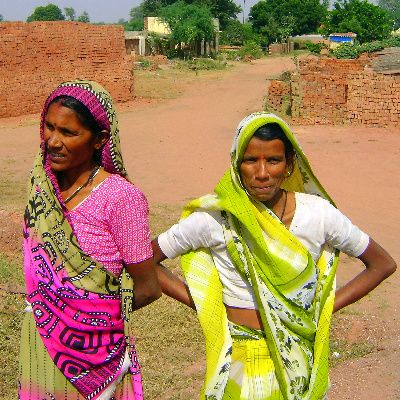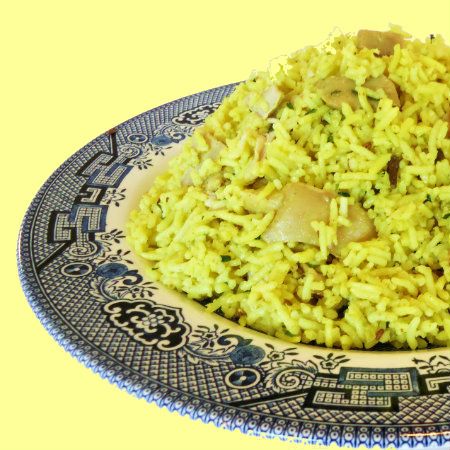
From the kitchen of One Perfect Bite...Those of you who love to cook and are familiar with the food of India, know that curry is a sauce rather than a spice. In India, the spices that are used to make a curry vary depending on the dish, the region from which it comes and the cook who is preparing it. The "curry" that is found in the spice aisle of our grocery stores bears only a passing resemblance to the blend of spices used in the typical Indian kitchen. The use of fresh spices is what drew me to the pilaf that I'm featuring today. The recipe was developed Floyd Cardoz and was featured on an episode of Sara Moulton's PBS television show. You can find the original recipe, here. That version of the pilaf makes enough rice to feed a small country, so, while I followed his recipe, I cut all of the ingredients in half. This is a lovely, fragrant dish that has absolutely no heat. It is substantial enough to be a light meal, but I suspect most of you who try this will prefer to use it as a side dish. The pilaf is simple to make, though it is time consuming. The only trick to successfully executing this recipe lies in a thorough rinsing of the rice. Keep at it until the water finally runs clear or your grains will be gummy and clump together. I think those of you who try the pilaf will find it pleasant and enjoy its perfumed flavors. It pairs well with plain grilled meats and it is a nice departure from standard rice accompaniments. I hope you will give this a try. Here's the recipe.
Chicken Pilaf...from the kitchen of One Perfect Bite inspired by Floyd Cardoz and Sara Moulton
Ingredients:
1/2 pound boneless chicken thighs
Kosher salt
1-1/2 cups white basmati rice
2 cups chicken or vegetable stock
1 cups coconut milk
2 tablespoons canola oil
1/2 teaspoon cumin seeds
1-inch piece cinnamon stick
2 small whole cloves
1 cup finely chopped white onion
1 tablespoons minced gingerroot
1-1/2 teaspoons minced garlic
1-1/2 teaspoons freshly ground coriander seed
1/2 teaspoon turmeric
1 bay leaves
1/4 cup cilantro chiffonade
Directions:
1) Season chicken with salt and refrigerate for 20 to 30 minutes.
2) Place rice in a large bowl and fill bowl with cold water running water. Swish grains around gently with your hand, then pour off water. Wash the rice about 10 to 15 more times in this way, or until washing water loses its murkiness and remains clear.
3) Pour off rinse water and cover rice with lukewarm tap water. Cover rice and let it soak for 20 minutes. Drain rice through a sieve.
4) Heat stock and coconut milk in a small pot over moderately high heat until boiling. Heat oil in a 4 to 6-quart pot set over moderate heat until warmed through. Add cumin, cinnamon and cloves. Cook for about 1 minute, or until the spices are fragrant. Add onion and cook, stirring, until softened (don’t let it color), about 3 minutes. Add ginger, garlic, coriander, turmeric and the bay leaves and drained rice, stirring to coat rice with oil. Add seasoned chicken and cook on high heat for 3 minutes. Add hot stock mixture and bring back up to a boil. Season with salt.
5) Cover and cook over moderate heat until liquid is absorbed absorbed and chicken cooked through, about 15 minutes. Gently fold in cilantro. Cover pot and let pilaf sit for 30 minutes before serving. Fluff with a fork and serve. Yield:4 to 6 servings.

One Year Ago Today: Zuppa Bastarda

Two Years Ago Today: Almond and Cherry Torte

Three Years Ago Today: Watermelon and Watercress Salad












